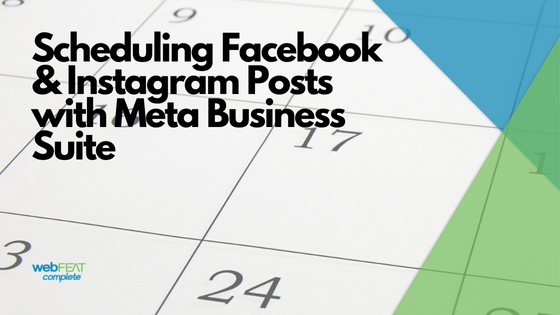Conversion reigns as the supreme ROI of SEO. It’s the biggest goal we have as content strategists and SEO gurus: present relevant content to a collection of users, who are looking for a specific answer, and convince them that they’ve found the product or service that will solve their problem.
See the problem. Show the solution. Make the sale.
Converting internet users from mere audience members to your potential customers is difficult to say the least. Not only are there multiple websites and companies targeting your users, but there’s also a time limit.
Attention fades. And quickly.
Because of this, your content must do more than just look pretty. It must inform. It must engage. It must strike a balance between the two authorities of content: who is speaking and who is reading. With the short amount of time we, as writers, have to maintain a complete connection with our audience, we can’t afford to waste a moment on information that misrepresents our intent.
Creating a profitable website is all about the way you frame your content. And the best way to frame your content is by reassessing its effectiveness from a UX (user experience) perspective.
So let’s get started. “What makes some content more effective and engaging than others?”
In other words…how do we answer that question we’ve all asked Google (I know you have, this is a safe space, don’t worry, I won’t tell): “What is effective content, and how do I write it?”
As content marketers, SEO gurus and website ninjas, even the best of us have fallen to the generic pitfalls of writing content ineffectively. So, how do we get over the hurdles of vague headlines, lackluster calls to action, overused marketing jargon, keyword stuffing, and missed opportunities to educate our audience? We must reassess the intent of our content.
Assessing Your Content
Content can be read from every angle. We read as the companies we write for. We read as ourselves, the experts. We read as our audience, the target market we want to reach. So in the grand scheme of things, there is more than one way to write your website content.
This is why “the best ways of writing website copy” is a hot topic that won’t fade out. When your website’s success depends on the perception of your audience, there are hundreds of ways your content can fail.
“So, what’s the difference between good content and bad content?”
Good content (of any variety) has the following 5 characteristics:
- Reflects the Company/Brand Values
- Describes the Intent of Page/Post
- Provides Resources/Information
- Answers a Question
- Provides Solution
- Begins a Conversation
- Presents a Unique Point of View
- Communicates with Purpose
At the end of the day, good website content relies solely on the creation and maintenance of trust. And that trust results from establishing a good user experience.
Let’s explore these 5 characteristics of good content in more depth, shall we?
1. Reflect Company/Brand Values
If you were to take a look at your website in its current state, how clear do you define your company’s values throughout the pages? Where do you specifically let your audience know your company’s goals and specialties? Do you make your audience feel welcome? Do you treat your website as your office?
Rule number one to good website content is to define your brand. Everything about your website should be a reflection of your company: from the design to the very last punctuation mark. In order to establish a cohesive brand for your website, you must be sure that every element of your content depicts your company values and gives your audience a feel for what your company stands for and believes in.
Focus Points
- Define your core brand values
- Create a hierarchy of products and services
- Create categories for posts to be sure users can easily find your hottest topics
2. Describe Page/Post Intent
In order to make a clear connection with your audience, it’s imperative to strategize what content you want to highlight and where. Does every page of your website serve a specific purpose? If so, does their organization make sense?
This is where you get creative. What do you want your audience to read first? Where do you want them to end up? What do they need to know before they get to that point?
Focus Points
- Decide which pages are most important in your main navigation
- Create links to encourage users to visit important pages
- Set aside featured pages you want users to see 24/7
3. Provides Resources/Information
Your audience is searching for specific answers to questions and solutions to a problem. When you consider your content, providing specific resources and articles is crucial to your overall success in the SEO world. Period.
While there are specific keywords that you’ll need to target, it is the success of your content to answer those keywords (and their queries) that determines your Google rank for those keywords.
Focus Points
- List out pages that will help support your most important pages
- Create specific content that focuses on answering your top searched questions
- Add multiple ways for users to contact you
- List all of your applicable locations and addresses
4. Present a Unique Point of View
Everyone says it: you must make unique content. But, that’s not the full story. Creating a lasting presence online is about more than creating content that is shareable and interesting and “unique.” It’s about taking your company and creating a unique conversation with your audience—taking topics that relate to your specific company goals and creating content that explores that idea from your perspective.
Focus Points
- List out specific ways users can benefit from your content
- Create content that you alone can provide to your audience
5. Communicate with Purpose
This is where your SEO skills come in handy. Assess the tone of your website content: does it explain topics fully, clearly and in a helpful way? How clear is the writing? Is the page well organized? Do the headers entice readers to continue? Are there clear calls to action and areas to explore further pages?
Just as each page has a focus keyword, each page must have a specific purpose. In order for a website to function in the most effective way possible, you must create the necessary content that will result in an informed user conversion.
Focus Points
- Create a content flow chart: decide your ideal funnel to conversion
- Ensure that every page on the way to your conversion point is organized to lead the user to the end of the funnel
- Provide necessary information along the way
- Create ways for users to return to the funnel if they stray away
Finding the Right Balance
No matter how many ways you slice it, effective content is content that inspires your audience. We spend hours researching precisely who we need to write to and how we need to phrase things in order to win trust. The key to winning the trust of your audience is not a formula. It’s not a step by step process. It’s not a list of ways you can write content that wins the Google game.
The key to winning trust is to read your content from all of the possible perspectives:
- Your Company
- Your Audience
- Your Experience
When you consistently look a brand’s services, products and values from the user’s experience, you’ll be able to create ways to frame your website’s content in a way that will not only describe what your company does well, but how potential customers can benefit from your company’s experience.
Knowing your audience is the heart of SEO. There are so many ways we can say it. But, at the end of the day, we are all writing to an audience: other gurus, potential friends, prospective clients, future customers, and even our biggest competition. The only way to write effective content is to continue the conversation. To answer questions that need to be answered. To provide the best service we can to the digital world.
An article you may also enjoy: 25 tips to Creating Great Content in 2018 from Caseo
“”





